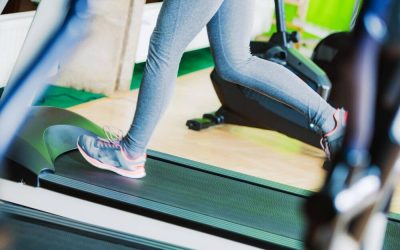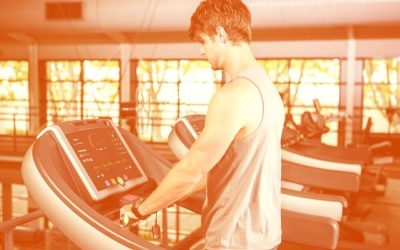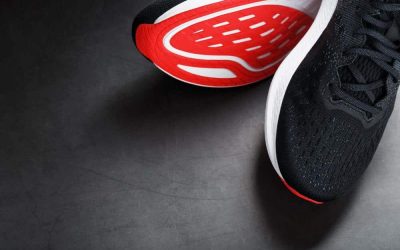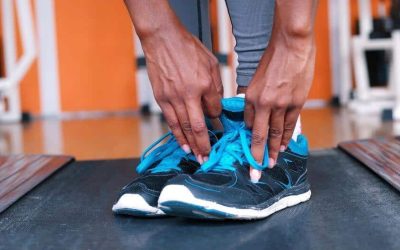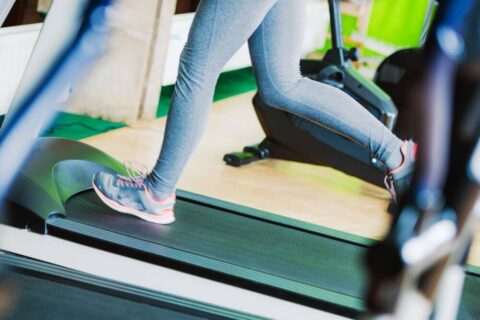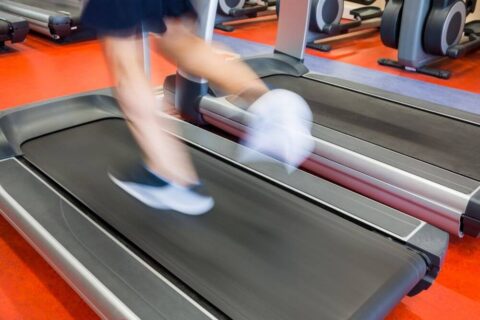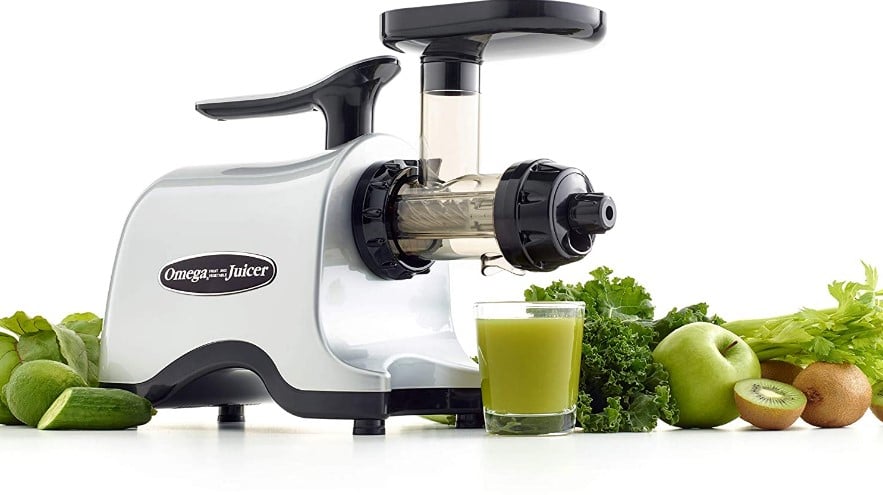CMI (Custom Market Insights) reports that the running shoe market is consistently moving forward, with an estimated USD 15.44 Billion in 2022 and an impressive projected growth rate of 4% from now until 2030! That puts its expected total revenue at around USD 19 billion by then – so if you’re involved in this field, it looks like great times ahead!
Image Courtesy: custommarketinsights.com
Trail running shoes are designed to support and protect runners running on rough terrains and uneven surfaces. These shoes are generally built with a rugged outsole and durable upper, which is meant to withstand the harsh elements of nature.
On the other hand, treadmill running is a popular indoor exercise option that involves running on a flat, consistent surface. It is a great way to stay fit and active when outdoor running is not an option.
However, a common question among runners is whether wearing trail running shoes on a treadmill is okay. In this blog post, we will explore the pros and cons of using trail running shoes on a treadmill and provide tips on making the most of your treadmill workout.
Read More: Best Treadmill Running Shoes for Women
Contents
Pros of Wearing Trail Running Shoes on a Treadmill
These are some of the advantages of wearing trail running shoes on a treadmill:
Provides Good Traction
Trail running shoes are designed to provide excellent traction on rough and uneven surfaces. The outsole of these shoes is made of durable and rugged materials that offer great grip and stability on slippery or wet surfaces. This can be advantageous for runners who want to use the treadmill during rainy or wet weather, as the surface can become slick with moisture.
Offers Good Cushioning
Most trail running shoes come with ample cushioning that helps absorb shock and reduce impact while running. This can be especially useful when running on a treadmill, as the consistent surface can put additional strain on your joints and muscles. The cushioning in trail running shoes can help reduce the impact on your knees and other joints, making your workout more comfortable and less taxing on your body.
Provides Adequate Support
Trail running shoes are designed to support your feet and ankles when running on uneven terrain. This support can be helpful when running on a treadmill, as it can help prevent injuries and provide added stability while running. The support provided by trail running shoes can also be beneficial for runners with flat feet or other foot-related issues.
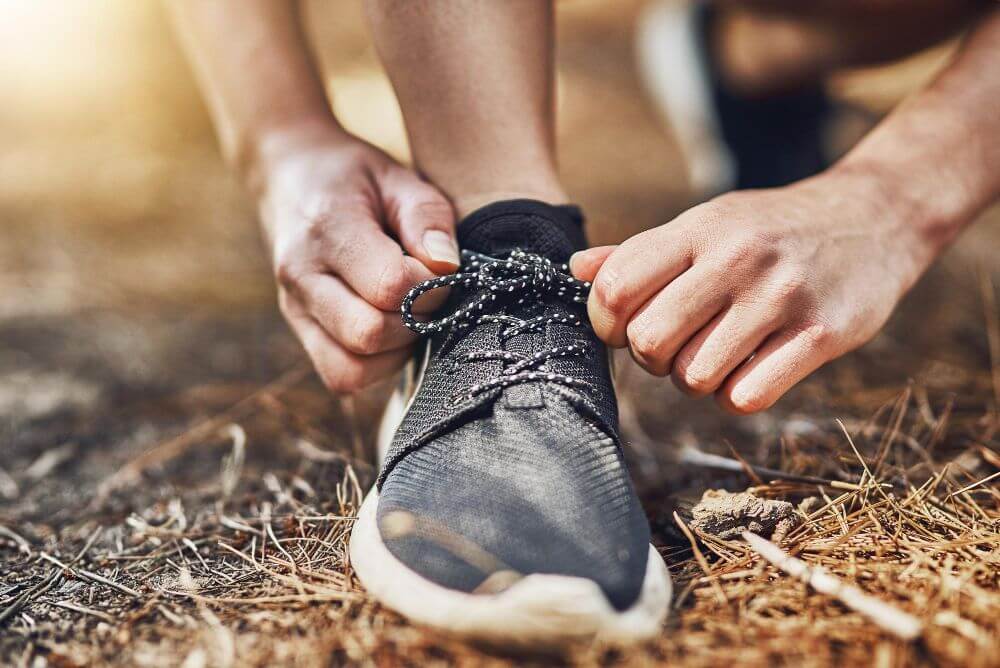
Cons of Wearing Trail Running Shoes on a Treadmill
Following are some of the drawbacks to wearing trail running shoes on a treadmill:
Heavier than Regular Running Shoes
Trail running shoes are typically heavier than running shoes due to their added durability and support features. This added weight can make it more challenging to maintain a fast pace on a treadmill, as you may feel like you are dragging your feet. If you like to sprint, you may find that trail running shoes slow you down.
Too Rugged for Treadmill Use
The rugged outsole of trail running shoes can make them too aggressive for use on a treadmill. The rough tread pattern can cause excessive wear and tear on the treadmill’s belt, leading to maintenance issues. The aggressive tread pattern can also create excessive noise and vibration, distracting or even annoying for other gym-goers.
Not Optimized for Treadmill Running
Trail running shoes are designed to provide support and protection for running on uneven terrain. However, since treadmills provide a flat and consistent surface, these shoes may not be optimized for use on a treadmill. The design features of trail running shoes, such as the rugged outsole and stiff upper, may not be necessary or even helpful for treadmill running.

Tips for Making the Most of Your Treadmill Workout
Our experts have compiled the following tips to help you get the most out of your treadmill workout when wearing trail running shoes:
1. Choose the Right Shoe
Choosing a comfortable, lightweight, and designed shoe is important when running on a treadmill. Look for shoes with ample cushioning and support and a breathable upper to help keep your feet cool during your workout. Running shoes designed explicitly for treadmills can be a great option, as they are typically lighter and more flexible than trail running shoes.
2. Adjust the Incline
To simulate outdoor running, you can adjust the incline on your treadmill. Running on an incline can help increase the intensity of your workout and engage different muscle groups. It can also provide a greater challenge for your cardiovascular system, helping to improve your endurance over time. However, if you are new to treadmill running, it is essential to start with a low incline and gradually increase it over time to avoid injury.
3. Mix up Your Workouts
Running on a treadmill can become monotonous over time, so mixing up your workouts to keep things interesting is important. You can vary your pace and incline and add strength training exercises to keep your body challenged. You can also listen to music or podcasts to help pass the time and keep you motivated.
4. Use Proper Form
Proper form is essential for preventing injuries and getting the most out of your treadmill workout. Keep your shoulders relaxed, your head up, and your arms at a 90-degree angle. Your feet should land under your body, and you should aim to take short, quick strides to help reduce the impact on your joints.
5. Take Breaks
When running on a treadmill, it’s essential to take breaks when needed. Listen to your body; don’t hesitate to slow down or even stop if necessary. Regular breaks will help prevent fatigue and injury, allowing you to stay energized and motivated throughout your workout.

Can You Wear Trail Running Shoes on a Treadmill: Final Words
In conclusion, while trail running shoes can benefit treadmill running, they may not be optimal. The rugged outsole and heavy weight of trail running shoes may not be necessary for a treadmill’s flat and consistent surface. However, if you already own trail running shoes and want to use them on a treadmill, it is essential to be mindful of the potential drawbacks, such as excessive wear and tear on the treadmill belt or excess noise and vibration.
Ultimately, the most crucial factor in a successful treadmill workout is choosing a comfortable and supportive running shoe designed for running. You can maximize your treadmill workout and achieve your fitness goals with the right shoe and proper form.


